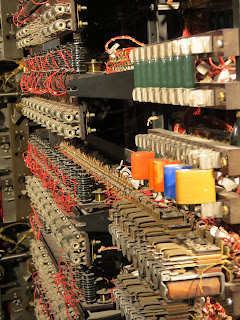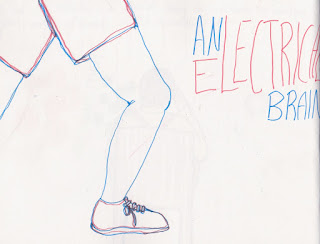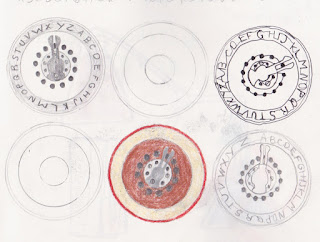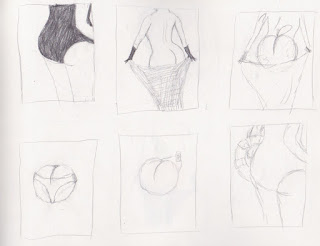Wow!
I'm just about to leave Bletchley Park after spending 5 hours here today, and I was blown away. Although I had intended to spend the day drawing around my subject of Alan Turing, I was so absorbed in his world and life that I didn't notice the time go by and I haven't done a single drawing! I took plenty of photos though, and really started to appreciate what it was like for Turing at Bletchley Park, I even got to see the 'bombe' in operation and went to a talk about it.
Because the tickets are annual passes I will definitely come back tomorrow, as it is only half an hour from where I am staying in London. I plan to skip straight to the specific parts about Turing and just spend my time drawing drawing drawing!
I was given a map and 'multi media guide' on arrival, which had loads of useful and interesting information on different aspects of the Park as well as anecdotes and interactive games about code breaking.
However, because I had underestimated the size of the place and amount of information it contains, I was so tired by the end of the day that I wasn't feeling energised enough to really read and draw when I got to the museum parts on Turing. Therefore these parts will be my focus tomorrow.
The most interesting things I discovered were:
- How the bombe works, I went to a demonstration on how it works and found the complexities and mathematics behind it astonishing
- The re-occurrence of simple things, such as the thin paper strips, punched paper and simple red grids on paper, give an insight into how repetitive and huge the operation was
- The relationship between paper and machine, and how they both relied upon each other to narrow down and work out the codes
- Simply the beauty of the place, and how this was, in some ways, a haven from the war, whilst still being at the very core of it
This has inspired me by:
- Seeing the workings out and roughing made me realise how personal these relationships with numbers were, and how it was the trials of different theories which allowed the breakthrough
- The imagery available through the simple, repetitive parts of the machines has made me think about simple colours and patterns, and how these basic means put a stop to the war
- The co-dependence of paper and machinery has made me want to explore using paper to construct more complex items
- The calmness of the place made me realise that their war was totally different to the physical one. Turing had to fight with himself, his co-workers and reams and reams of text. I want to stay away from expected war-time imagery, as that wasn't Turing's legacy. His was a battle of wit and logic to win the war through saving lives, not taking them
My plan for tomorrow is:
- Get there early and head over to hut 8 (most people follow the numbered guide so it will be quiet early on as it is halfway through the tour)
- Exhaustively draw the interesting parts of Turing's office and hut- re-listen to the guide
- Try to get on one of the hour long 'chauffeur tours' of the gardens and huts
- Go to the museum and draw the intricacies of the bombe
- Spend some time reading about Turing in his exhibition space
What questions will I resolve tomorrow?
- What amount of contact did Turing actually have with the Bombe?
- How did the actual construction of the Bombe work?
- Would the deciding of the messages be possible without Turing's work?
 |
Leading to the cottages where Turing lived for
some of his time at Bletchley |
 |
| Multi-media guide |
 |
| Radio tower |
 |
| Bombe prop from the Imitation Game |
 |
| End of the day in the visitor café |

















































